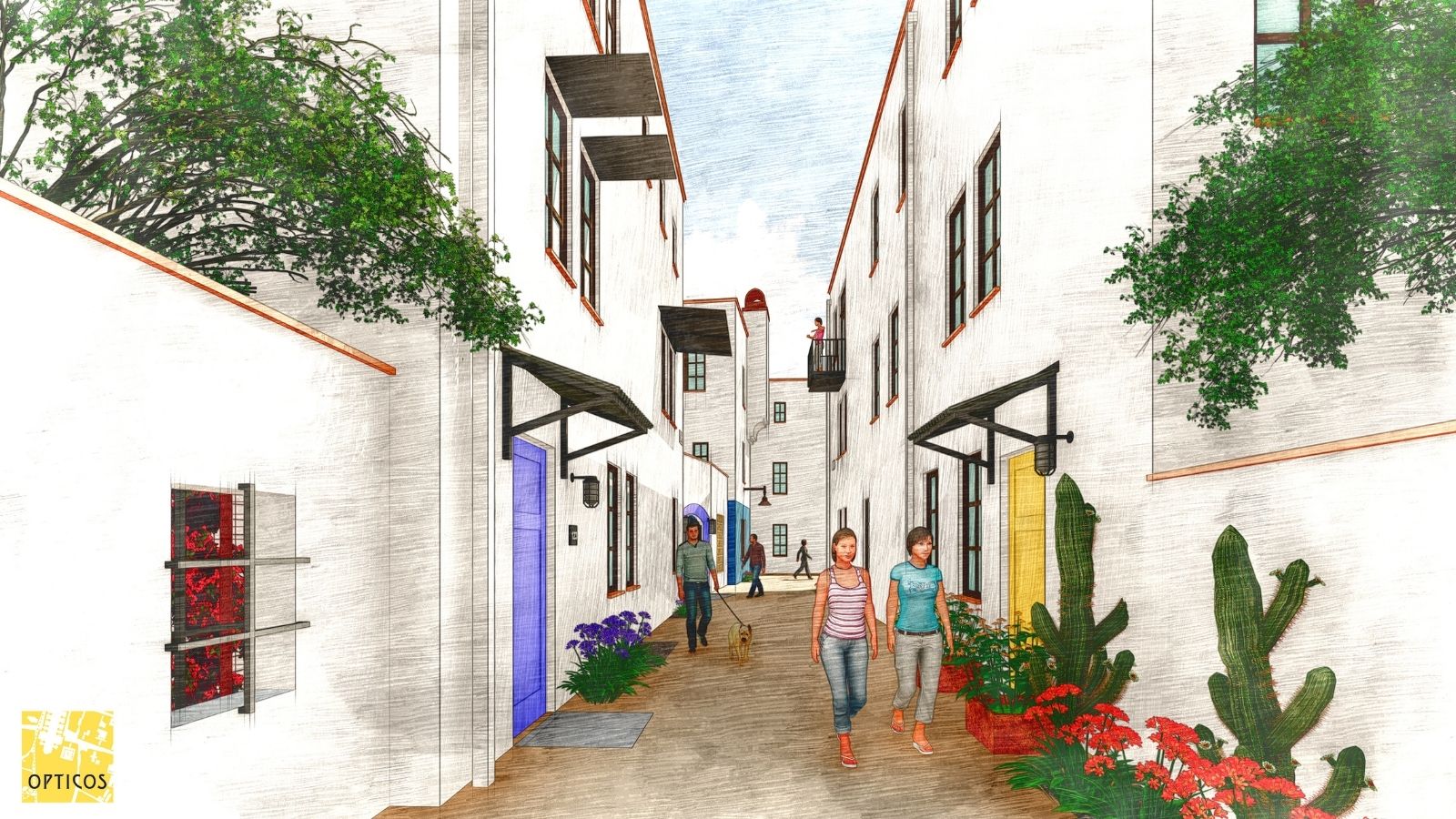If you were to get your hands on the Culdesac team’s copies of Jane Jacobs’ The Death and Life of Great American Cities, you would discover that the majority of pages are dogeared or filled with annotations.
Jacobs dissects various uses of space and illustrates how walkable, mixed-use blocks with open space are key to fostering happiness, innovation and creativity. Although the book was published almost 60 years ago, the urban form Jacobs describes is even more relevant today.
The majority of Americans (52%) want car-optional, convenient, walkable neighborhoods (1).
How Many People Actually Live in Walkable Neighborhoods?
Typically, supply rises to meet high demand. Despite record demand for walkability, supply remains low.
Conventional developments in U.S. cities are dominated by building codes and financing systems that require immense parking garages and contributions to car infrastructure. This prevents people from getting what they want: walkability and the amenities to support it.
The premiere dataset on walkability in the U.S is from Walk Score. At a granular level, Walk Score measures the average resident's ability to do errands on foot throughout the U.S.
We looked at the Walk Scores of a statistically representative sample of the 11 million Census Blocks in the U.S. Then, we weighted the Walk Scores by the populations of those Census Blocks.
We found that U.S. cities with a population of ≥200,000 have an average Walk Score of 48 and only ~8% of people in the U.S. live in neighborhoods with a WalkScore of at least 70. This means that only 1 in 12 Americans can accomplish their errands on foot.
No wonder we are so car dependent.
Designing for Walkability
Over half of Americans want walkable neighborhoods. However, for the last 70-plus years, urban construction in America has been dominated by auto-centric planning.
We're solving this problem by making walkability a neighborhood-scale feature. You can't build a standalone walkable apartment building. Walkability is about the entire urban fabric surrounding your home - restaurants, parks, leisure, and more.
That's why Culdesac builds entire neighborhoods from the ground up. We need to build at this scale to achieve walkability.
Our first neighborhood-scale development, Culdesac Tempe, is built for 1,000 people and is comprised of 55% open space, essential retail vendors on-site (like a corner market and restaurant), and zero residential parking.
Instead of roads, buildings at Culdesac Tempe are accessed by walking paths called paseos. A major east-west paseo serves as the main spine of the neighborhood.
Our next neighborhoods will be for 5,000-10,000 people; they will include additional essential infrastructure on-site, like schools and health care facilities.
This means neighborhood scale ground-up developments designed with walkability as an uncompromising design principle.
The evidence is clear - people want walkable neighborhoods, but few Americans get to have them. At Culdesac, we’re creating the template for building more walkability in America- starting in Tempe, AZ.
_________
1 "2020 Community and Transportation Preference Survey." NAR, Aug. 2020.


.jpg)





